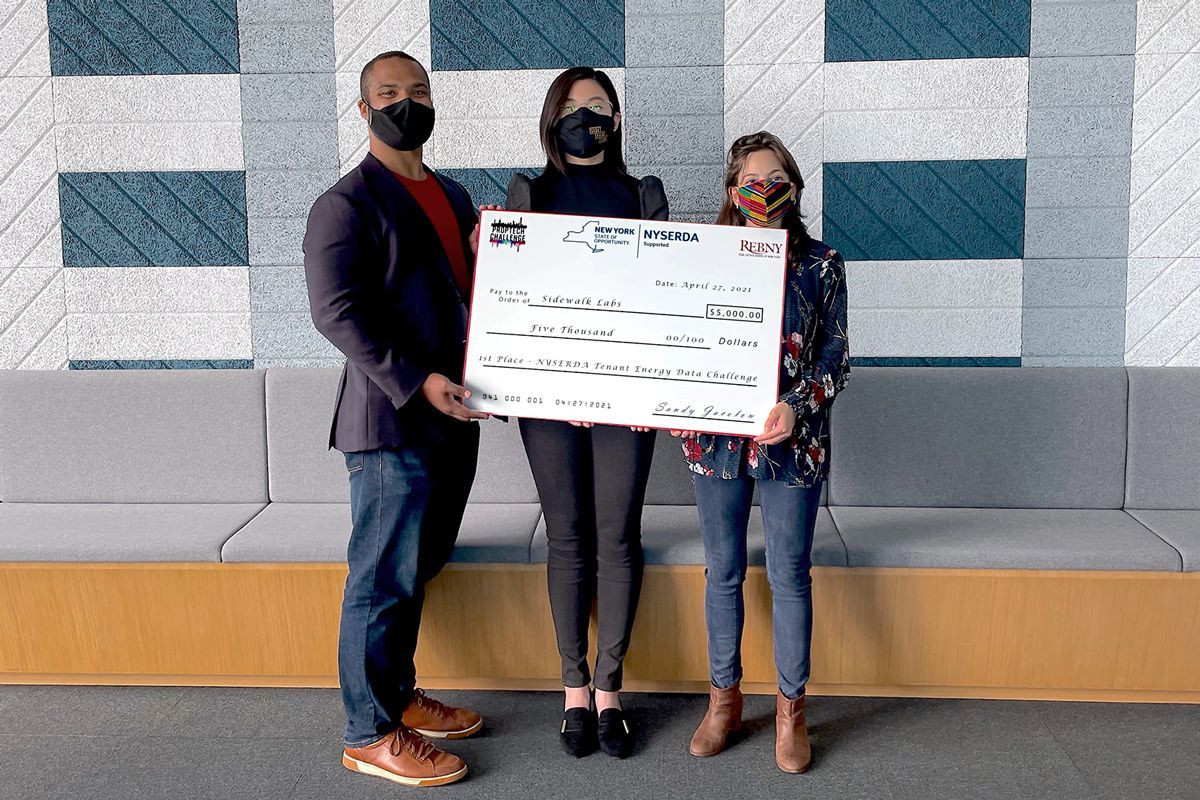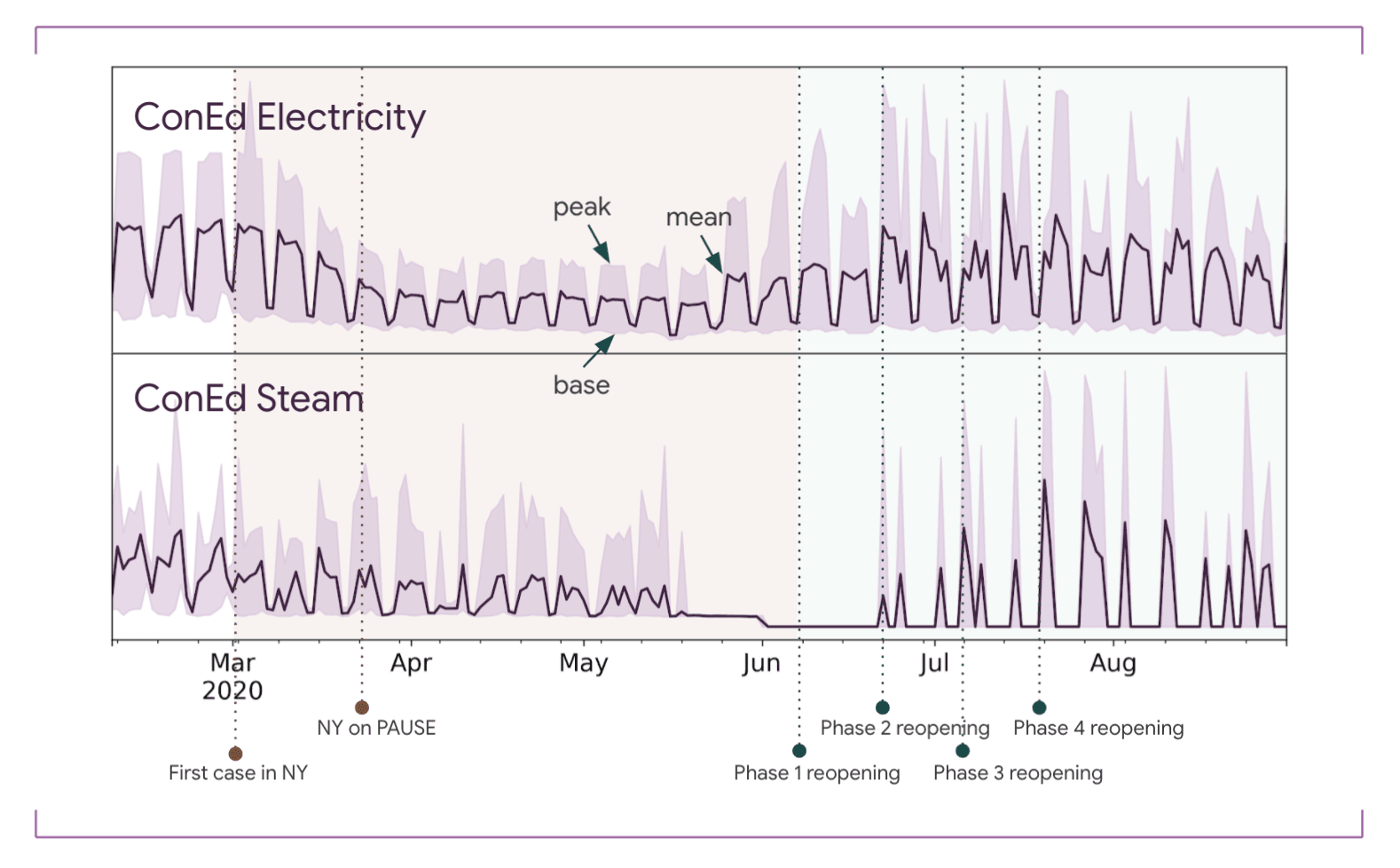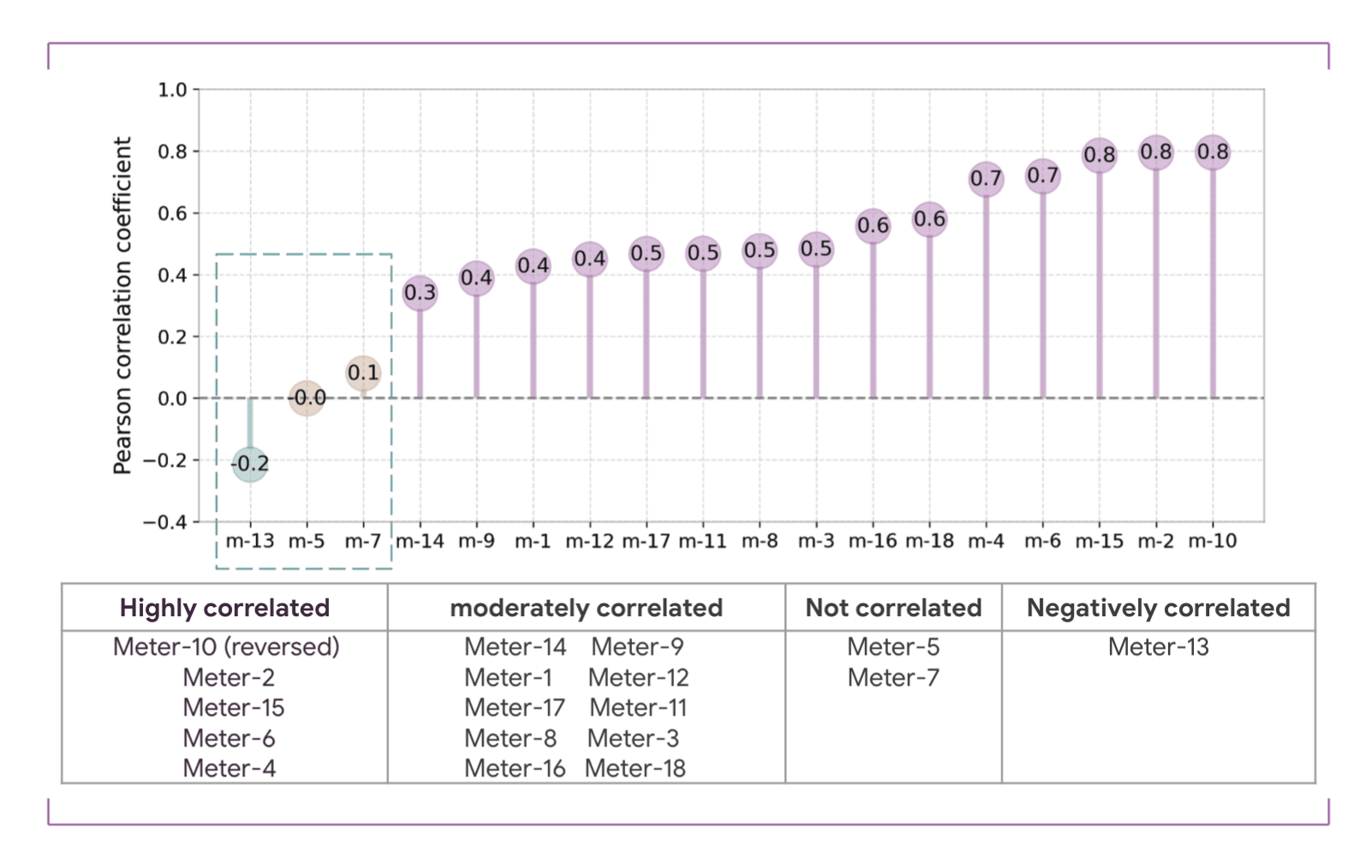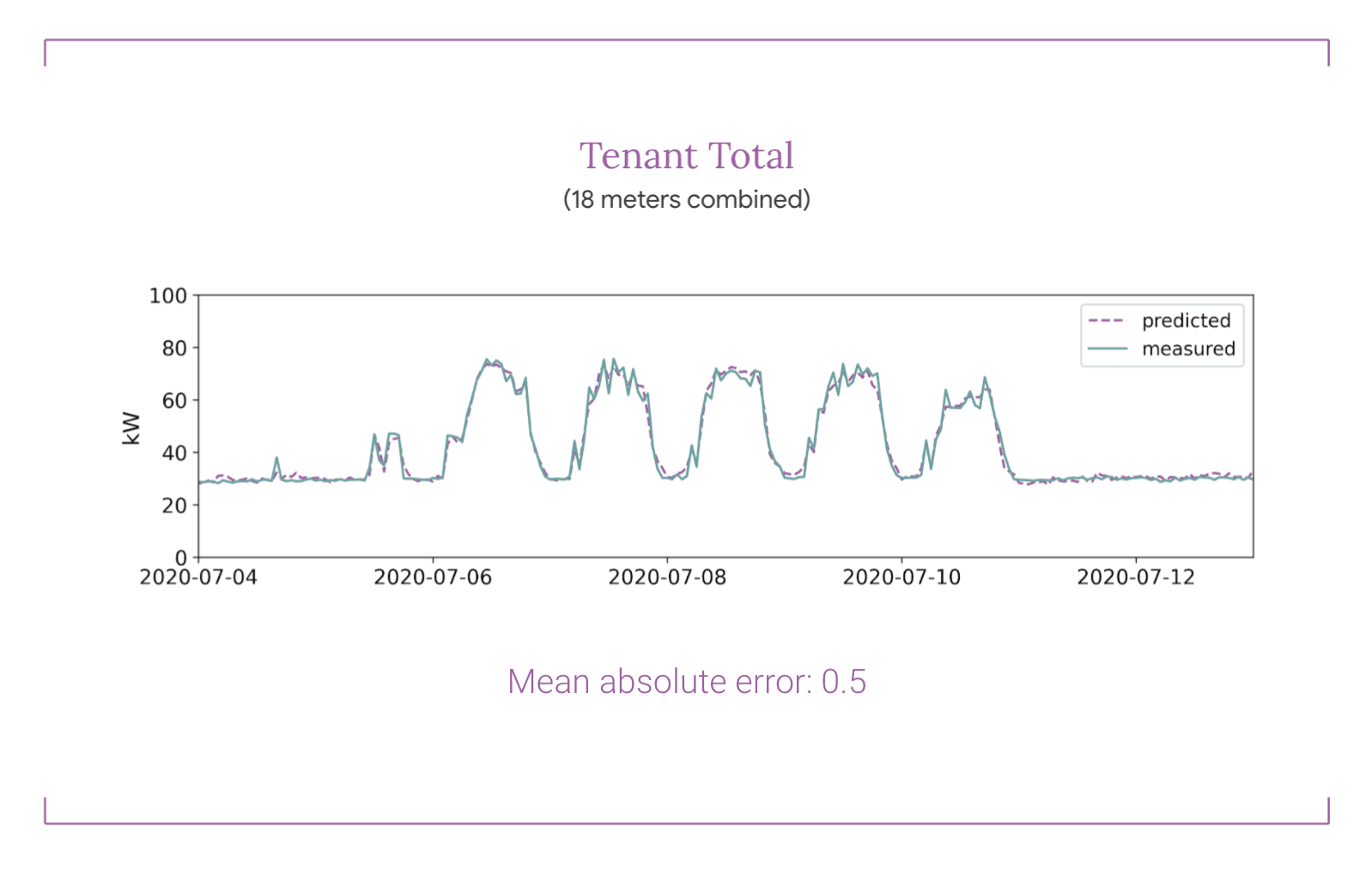Mesa
How we won the NYSERDA PropTech Challenge
My data analysis found why many office spaces used lots of energy even as few workers came in during Covid. Here's what commercial buildings can do about it.
By Jenny Chen

Sidewalk Labs Data Scientist Jenny Chen and Head of Mesa Rachel Steinberg receive a check from PropTech Challenge Cofounder Ryan J. S. Baxter. Sidewalk Labs will be donating the winnings to a nonprofit (if you are or know of a nonprofit organization that could use help with energy management, then please email us at mesa@sidewalklabs.com).
Contact us to learn more about Mesa
Contact UsWhen the pandemic caused office workers to begin working remotely, once-vibrant office spaces across the country, and the world, emptied out. As a data scientist on the Mesa team focused on the energy efficiency of buildings, I hoped that, during this time of low-to-no occupancy, office buildings would essentially go into hibernation mode. But unfortunately, research suggests that buildings by and large continued to consume energy at about the same rate as they did in pre-pandemic times.
I wasn’t surprised: most buildings aren’t capable of responding to real-time changes in use by cutting energy costs and waste. But Covid put this problematic reality into stark relief. Indeed, this situation is what drove New York State’s Energy Research and Development Authority (NYSERDA) to issue a PropTech Challenge around Tenant Energy Data.
NYSERDA asked participants to take real-world energy consumption data from a single large office tenant in Midtown Manhattan, along with some building-wide data on occupancy and energy use, and then: (1) clarify how occupancy impacts building energy use (and thus quantify Covid’s impact on the building) and (2) create a predictive model that could project energy consumption levels in the future. The goal was to see if participants could help improve understanding of the drivers of electricity consumption within New York City office buildings and propose ways to reduce consumption.
The call was an urgent one — after all, commercial buildings account for 12 percent of U.S. energy use and 47 percent of U.S. electricity use — so I threw my hat into the ring. I’m incredibly proud to announce that our predictive model won first place. I’ll be donating the winnings to a nonprofit (if you are or know of a nonprofit organization that could use help with energy management, then please email us at mesa@sidewalklabs.com).
In this blog post, I’m going to break down exactly what I found, including the drivers resulting in office energy use during Covid, and I’ll finish with some suggestions and advice for how office buildings can become more flexible and responsive to real-time occupancy levels — so they can drive down emissions and save money, too.
What the data taught us
Let’s call the anonymous Manhattan office tenant from the PropTech Challenge “Tenant X.”
I began by analyzing Tenant X’s overall electricity. The data immediately reflected the timeline of Covid in New York. The building’s electricity load decreased dramatically starting in March 2020, stabilized after “New York State on PAUSE,” and then partially recovered around June. The rate of consumption was all in step with the overall occupancy levels; in other words, the building used less energy when there were fewer workers present. This was good news: the building had clearly taken measures to cut unnecessary loads and improve its energy efficiency.

The data shows that the building used less energy when there were fewer workers present.
But when I zoomed into the electricity use of Tenant X’s individual office spaces, the correlation weakened. Even when there were fewer occupants, the energy use in some tenant spaces remained high. Why?
I drilled down into the data from each of Tenant X’s meters, and found that while some spaces did indeed use less electricity when no one was there, others did not. In other words, Tenant X’s office space has the potential to achieve even higher energy efficiency levels by being more responsive to variable factors such as occupancy and occupancy patterns, weather and weather forecasts, occupant feedback around thermal comfort, utility rates, and power grid signals.
For example, check out meter 13 in the graph below, which had a negative correlation between occupancy and consumption (i.e. it was reading a higher energy usage during Covid times than during business as usual). The next step would be to understand which zone this meter is monitoring, discover the drivers of usage in that space (to understand what can be adjusted based on occupancy, weather, etc.), and then to explore further energy-saving opportunities.

Some of Tenant X's spaces did indeed use less electricity when no one was there, others did not.
I then revisited the overall building’s daily electricity consumption to analyze the trends and gather more conclusions. According to my analysis, 40 percent occupancy would be the “sweet spot” for the building to effectively balance energy efficiency with occupant safety during this recovery phase of the pandemic. At 40 percent occupancy, you can achieve a balance of providing occupants with more space to socially distance, maintaining thermal comfort, and achieving overall energy efficiency. (You might think that, from an emissions perspective, zero occupancy would be best, but because a building emits a base level of energy, even without occupants present, some occupancy is actually more energy efficient than none.)
I also found that tenant electricity consumption rises slightly in the winter, possibly due to personal heaters or electric reheat, and that the cooling energy of the tenant spaces is not monitored by meters. This means that tenants have no financial incentives to save cooling energy. Informing occupants about their real-time energy consumption and the impact of their behavior (i.e. the emissions caused by raising/lowering the thermostat or using personal heaters or coolers) would likely further improve energy efficiency. That said, ultimately, automating savings is the easiest solution for everyone.
And, lastly, I noted that the prediction model — while accurate — could have been even better if I had more data from this tenant space to analyze.

The prediction model accurately predicted the building’s energy use.
How Mesa can help
Getting data is key — if we don’t know what’s happening in commercial buildings, no one will be able to effectively tackle consumption or emissions. That’s where Mesa comes in.
Mesa is an affordable, easy-install kit that gives commercial buildings the kind of data they need to understand what’s happening in their space. Then, using that data, Mesa’s AI-powered software optimizes operations to help buildings achieve the most energy efficiency possible. Plus, Mesa’s app tells tenants exactly how much data they’re using, which, again, can incentivize occupants to help buildings reach their energy emissions goals.
On behalf of the Mesa team, I’m so proud to have taken part in this challenge, and to hopefully drive awareness on how important it is for commercial buildings to start measuring their electricity use and identifying and addressing their energy-consumers. It’s the first step toward more responsive and efficient buildings — and, in time, a more sustainable planet.
Learn more about how Mesa can save your building energy www.sidewalklabs.com/mesa